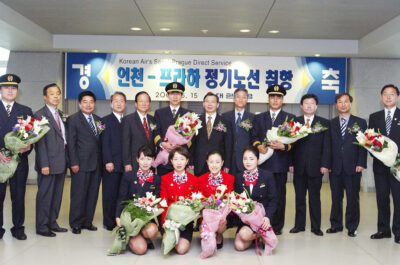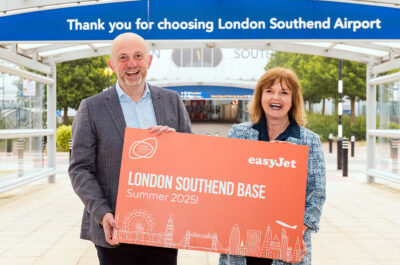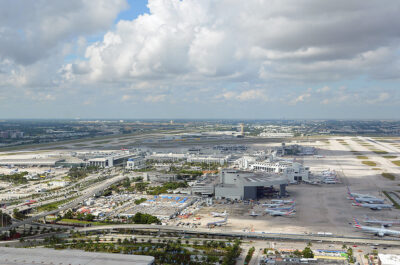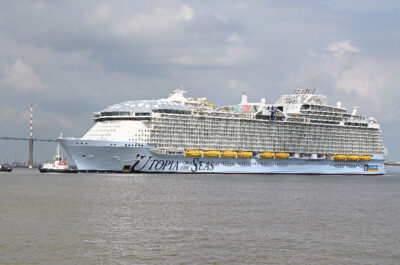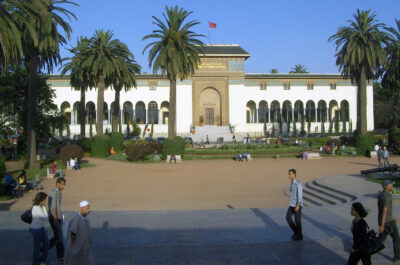After two years of declines, London managed a 3 per cent increase in international arrivals in 2003, to just under…
After two years of declines, London managed a 3 per cent increase in international arrivals in 2003, to just under 12 million. The UK capital`s tourism sector has been struggling since 2000, suffering a steep drop in arrivals, nights and spending over the period. Although the well-rehearsed explanations of the high value of sterling, the impact of 11 September, continuing terrorist threats, declines in the US economy, the Iraq war etc, have affected all urban destinations, London has fared worse than many other cities in the UK – and indeed in Europe. There is no current solid research on visitor perceptions of London, yet it appears the gloss has gone off the capital as a leisure destination while business travel is suffering from the economic downturn.
Even in the context of the UK`s lacklustre international performance in 2001 and 2002, London`s results have been poor. While international arrivals in the UK as a whole picked up by 5 per cent in 2002, the capital failed to attract back visitors lost in 2001. Similarly, international tourism expenditure in the UK increased by 4 per cent in 2002, but London`s tourism spend showed little improvement on the previous year`s level.
In addition, London has lost share of international tourism in the UK using all three measures since 2000. This changing pattern in part reflects the growth of direct air services to regional destinations in the UK, and the push by more UK cities to develop international short-break markets. But nonetheless, it is serious for a city that claims that 8 per cent of its GDP is generated by tourism.
Although there have been a number of promotions to encourage the domestic market to compensate for lost international visitors in London, the capital`s domestic visitor count has also declined sharply since 2000, and is forecast to register a further decline in 2003 – although early year projections were much more bullish. Overnight volume and spending by domestic visitors have also fallen, and continue to fall.
International leisure travel fell dramatically in 2001 – from 6.1 million holiday trips to 4.8 million – and, worryingly for London, there was only a marginal increase in 2002, to 4.9 million. VFR visits (to friends and/or relations) from abroad increased from 2.5 million in 2000 and 2001 to 2.7 million in 2002.
There is anecdotal evidence to suggest that visitors who come to study in London – the majority for English language courses – have also declined dramatically. European enrolments in London`s language schools are down by a third according to one source. A recent spate of bankruptcies at nonaccredited language schools in London has exacerbated the situation.
Given the economic downturn, it is not surprising that international business visits to the capital decreased from 3.1 million in 2000 to 2.8 million in 2001 and 2002. Domestic business travel has been more resilient, however, with overnight trips remaining relatively stable – 3.8 million in 2000 and 3.9 million in each of the last two years.
Overall, in 2002, holiday travel accounted for 42 per cent of international arrivals and 37 per cent of spending, while business travel generated 24 per cent of arrivals and 32 per cent of expenditure.
London`s international business travel sector believes the US market will start to recover quite rapidly both for independent and organised business travel – although it will not regain 2000 levels for a couple of years. Aside from the need for a new convention venue, issues of perceived high costs in London and continuing transport difficulties need to be addressed urgently to attract more business from the domestic and European MICE sectors (meetings, incentives, conferences and exhibition travel).
The Scandinavian market has remained strong, despite the Iraq war, and London`s business travel sector is seeking to develop integrated packages targeting the large Scandinavian multi-national companies. China and India have been identified as the most important emerging business markets for London, while Russia has considerable potential at the luxury end of the business travel market. The Middle East is another interesting source, but a business leaders forum believes that London must address the demands of the younger Middle Eastern generation, whose tastes are quite different from those of their fathers.
Despite declines in visitor numbers, the share of London`s key source markets has changed little over the past few years. The all-important US market declined from 22 per cent in 2000 to 21 per cent in 2002, but its share of spending has remained constant. Italy gained share in arrivals in 2002 – accounting for a 5 per cent share as against 4 per cent in 2000, although spending declined. Spain generated a 4 per cent share of international arrivals in 2002, compared with 3 per cent in 2000, and its spend also increased. Encouragingly, the Japanese market also shows signs of picking up again. Although figures for smaller markets are not available, it is likely that these contain promising new sources of business – Russia, India etc.
There has been a shift towards older visitors since 2000. The share of international visitors to the capital aged 24 or younger declined from 20 per cent in 2000 to 18 per cent in 2002, while the 25-34 group increased its share from 24 per cent to 26 per cent and the 35-44 group from 21 per cent to 22 per cent. There has been a parallel shift in the domestic market, with the share of 16-24 year-old domestic visitors decreasing from 23 per cent in 2000 to 21 per cent in 2002.
Unfortunately for London, the decline in visitors coincided with a major shake-up in the tourism administrative framework, following the introduction in 2000 of a new government structure under an elected mayor for the capital. The tourism sector – and the London Tourist Board – went through many months of uncertainty over future policy and funding for the industry at the very moment that strong leadership and additional funds for marketing were most needed.
In 2002 the London Development Agency (LDA), which drives the capital`s economic development on behalf of the mayor, emerged as the holder of the city`s tourism purse-strings and as the body responsible for activating the mayor`s new Plan for Tourism, which was launched in 2002.
The role of the former London Tourist Board, re-named Visit London, has been pared down to focus primarily on marketing and promotion. Funding from the LDA has been significantly increased, enabling Visit London to embark on large-scale marketing campaigns for the first time. While the LDA has appointed Visit London to carry out the marketing activities outlined in the mayor`s tourism plan, the arrangement is initially only for two years. The LDA makes it clear that it can switch to another organisation if Visit London does not match up to expectations.
The LDA`s lack of experience in the tourism sector, coupled with its ability to access considerable funds, is of course good news for the usual band of tourism consultants who have been called in to produce numerous reports on a range of tourism issues.
The LDA has allocated core funding of £3.8 million (at EUR1.42 to £1) to Visit London for each of the financial years 2003/4 and 2004/5. An additional £15 million – the first time London has had funds to launch large scale campaigns – has been granted to fund six campaigns to boost London`s profile. Some £3.8 million has already been spent for a Totally London campaign targeting local source markets, which began in May 2003, and £6 million is targeting the UK and Europe. Visit London joined VisitBritain`s campaign in the USA following the Iraq war, and has put a business travel representative in place in New York for the first time.
In November 2003, a £4 million six-month campaign was launched to attract visitors back to the capital, specifically aiming to establish the capital as a destination with a unique and vast choice of things to see and do. The campaign has included TV advertising, as well as advertisements in regional newspapers coupled with value offers from suppliers in the UK (in November) and in France and Germany (in December 2003). London has also participated in VisitBritain`s city-break campaign in key international markets.
This step-change in the marketing of London also features a new corporate brand for Visit London and a new Visit London chief executive (recruited from the private sector and receiving a substantially higher salary than his predecessor). There has been a major internal re-structuring in Visit London, with additional staff for marketing – especially business tourism – and membership, and the loss of others in planning and development.
There has been some progress in crucial infrastructure developments for London, but major improvements – especially to the underground rail system – are still several years off. Traffic congestion charges in central London have improved city-centre mobility for visitors, although the perception that public transport costs are the highest in Europe will be vindicated when new underground fare hikes are brought in at the start of 2004.
One positive development is the long-overdue decision to go ahead with the £10 billion Crossrail scheme, which will links Paddington station on the west side of London to Liverpool Street on the east, with onward connections to the international stations of Stratford and Ebbsfleet. This will eventually ease pressure on the underground, and reduce travel time across London.
However, work will not start until the end of 2004, leaving little chance for the project to be ready by 2012, when London is hoping to host the Olympics.
Access to London from Europe by Eurostar is expected to improve by 2007, when the North Kent station of Ebbsfleet (just off the M25) will open, allowing passengers to travel from Paris in just two hours. Forecasts to date on passenger traffic to London from Europe have proved to be over-optimistic.
It was anticipated that, by 2003, Eurostar would be carrying 12 million passengers in and out of London`s Waterloo. In reality, it carried 7.1 million in 2002 and, in the first six months of 2003, 2.9 million. Also, the forecast balanced two-way flow of traffic has not materialised – the number of French using the service to travel to London is only about half that of as UK residents travelling to France.
Congestion at Heathrow`s terminals will be eased when the fifth terminal, now under construction, opens the first phase of the development in 2008. But the decision to delay, for at least a decade, the building of a third runway for Heathrow could well have a negative impact on tourism growth to the UK capital – especially on higher-yield business from abroad. Instead, London Stansted will get an extra runway by 2011-12 – the first new runway for London`s airports for 20 years – primarily boosting capacity for no-frills airlines such as Ryanair.
The much-needed, large-scale international convention centre for London has moved a step closer following an initiative from the LDA. Although the industry has been pleading for a facility for decades, until now there has not been an organisation with enough interest, or clout, to get the project going.
A feasibility study will be conducted by April 2004, and a decision taken on its location. The centre should be on a central brown-field site says the LDA – possibly Battersea Power Station or the site behind Kings Cross station, or perhaps further east, nearer ExCel, Canary Wharf etc. Facilities for exhibitions have improved at ExCel where, finally, more hotel rooms are opening nearby.
One interesting new project – dependent on pending government reform of current gaming laws (likely in 2005) and on planning permission – is a joint venture agreement between Earls Court and Olympia Group and US group MGM Mirage to develop a Las-Vegas style £150 million gaming and entertainment complex. This would be located in the Olympia Exhibition Centre, alongside the existing exhibition and conference space. There are also reports that Sol Kerzner, head of Sun International and famed especially for resorts such as Atlantis in the Bahamas, is talking of a new casino and resort complex involving the London Dome.
Clearly the UK capital`s hotels have had a tough time, although it appears the worst may now be over. Deloitte Touche`s HotelBenchmark Survey showed that, for the first time in 18 months (ignoring the impact of 11 September 2001), hotels in central London reported a rise in revenue per available room (revpar) in September. Average room rate (ADR) also recorded an increase of nearly 2 per cent and occupancies strengthened, up 5 per cent to 84 per cent. Results for the month of October from TRI Consulting also point to improved performances for London`s hotels, although both occupancy and ADR were still well down on October 2000`s levels.
Theodore is the Co-Founder and Managing Editor of TravelDailyNews Media Network; his responsibilities include business development and planning for TravelDailyNews long-term opportunities.























































